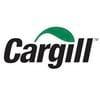PRRS and Lawsonia intracellularis infections during the starter and grower period of finishing pigs reduce ADG and increase FCR
Published: July 24, 2025
Source : R. Jansen 1, M. Hutjens 1, T. Cruijsen 2, V. Geurts 2, L. Marchal 1 / 1 ForFarmers, Lochem; 2 MSD-AH Intervet Nederland B.V., Boxmeer, Netherlands.
Summary
Keywords: None
Introduction:
PRRS is directly and indirectly an important risk factor for the Porcine Respiratory Disease Complex influencing finishing pig performance. A lot is known from controlled experimental studies. However, studies under practical circumstances about the influences of various pathogens on finishing pig performance are scarce.
Materials and Methods:
In total 815 pigs were individually followed from birth (December 2012-January 2013) until slaughter (June-July 2013). Pigs were identified by a chip containing an ear notch. Pigs were vaccinated against Mycoplasma hyopneumoniae (Mhyo) and PCV2. Out of these pigs, 116 pigs were randomly selected for longitudinal serological surveillance and were bled by jugular venipuncture and weighed at 9-(T1), 14- (T2), 18- (T3) and 22- weeks (T4) of age. At approximately 10 weeks of age at 20 kg, pigs were transported to the finishing farm. Carcass data of the pigs was collected in the abattoir. Serum was stored at -32°C until analysis. Serum samples T1 and T4 were analyzed for antibodies against PRRS, PCV2, Mhyo, Influenza (INF), Actinobacillus pleuropneumoniae (APP) and L. intracellularis (LAW) by the MSD R&D Service Laboratory (Boxmeer NL). After analyzing the T1 and T4 samples, it was decided to measure the T2 and T3 samples for PRRS, LAW and APP. An infection was defined by a change from negative towards positive in two consecutive periods based on the test specifications. Data was analyzed with SAS using generalized linear mixed models (Proc Glimmix).
Results:
Infections occurred predominantly with the pathogens APP (93.2%), Law (87.9%), and PRRS (76.7%). Infections with the other pathogens was of a lesser extend (Mhyo 1.7%; INF 21.6%, PCV2 14.4%). Technical performance measured by ADG was mainly affected by infections with PRRS, showing a significant (p< 0.01) reduction of ADG in the starter period (T1-T2; n = 26; 59 gram ADG) and the grower period (T2-T3; n = 39; 64 gram ADG). In the finishing period (between T3 and T4) only 3 animals were infected with PRRS. PRRS infections during the starter and grower period resulted in a significantly lower carcass weight at slaughter of 3.4 and 4,. kg respectively (p=< 0.05). PRRS infections in the starter period resulted in a higher FCR (0.15; p< 0.01). Infections with LAW during the grower period resulted in a significant reduction in ADG of 39 grams (p< 0.05).
Conclusion:
PRRS and LAW seroconversion reduced ADG with ~60 grams/day and increased FCR with 0.15. This study shows that the effect on ADG, due to a PRRS infection, does not differ between the starter and the grower period.
Disclosure of Interest: None Declared.
Published in the proceedings of the International Pig Veterinary Society Congress – IPVS2016. For information on the event, past and future editions, check out https://www.theipvs.com/future-congresses/.
Content from the event:
Related topics:
Recommend
Comment
Share

Would you like to discuss another topic? Create a new post to engage with experts in the community.









